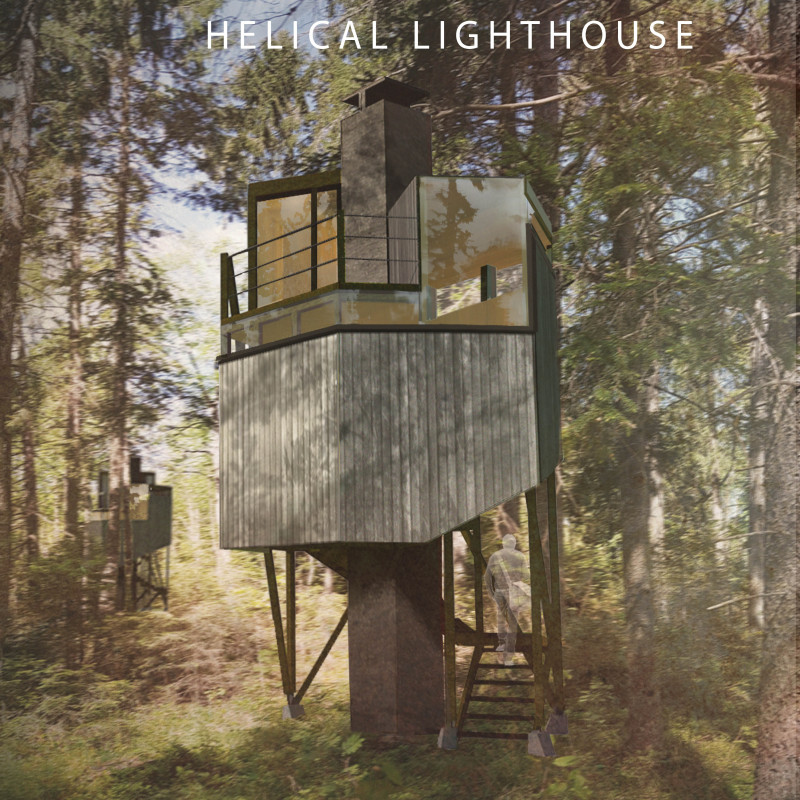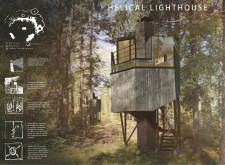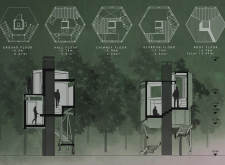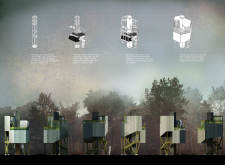5 key facts about this project
The design features three cabins situated in a forest: Ozolini, Forest, and Lake Bezdibenė. Each cabin draws inspiration from the concept of a lighthouse, presented as distinct points within the landscape. This approach encourages a strong connection between the buildings and their environment, highlighting the interplay of light and space that creates a peaceful atmosphere.
Design Concept
The project emphasizes light as an essential element in the overall experience. Openings are purposefully integrated throughout the structure to create a flow of light that enhances interaction with the surroundings. By aligning the cabins with the height of the surrounding trees, the design promotes a sense of unity with nature, allowing occupants to feel both grounded and elevated.
Structural Framework
The cabins are organized around two main axes: a vertical axis defined by the central chimney and a helical axis that shapes the arrangement of interior spaces. The vertical design serves both functional and visual needs, anchoring the structure while enhancing its appeal. A central pillar accommodates key facilities, such as the chimney and water installations, and allows spaces to be organized fluidly around it.
Material Use
Laminated wood beams provide the structural backbone for the cabins, ensuring stability and flexibility in design. These beams support the central pillar and contribute to the overall integrity of the structure. Using wood reflects a commitment to natural materials, helping the cabins blend in with their forested setting while promoting a warm, inviting atmosphere.
Lighting Experience
As occupants move through the cabin, carefully positioned openings invite natural light inside, creating a changing ambiance throughout the day. This thoughtful arrangement encourages reflection and strengthens the bond with the outdoors. Up top, unobstructed views from the roof allow for an appreciation of the forest canopy, enhancing the visual connection between the cabins and their natural surroundings.






















































